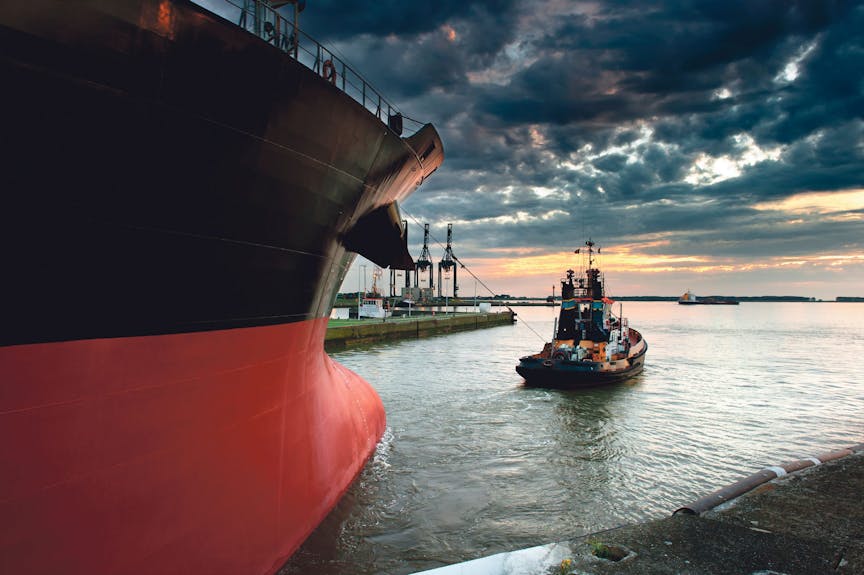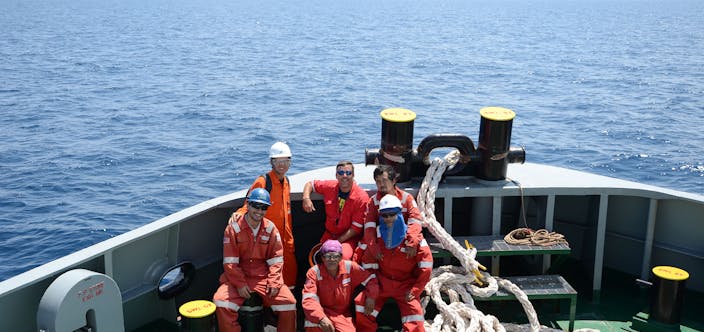Tug Operations – Towage
Towage operations are carried out by tugs in various situations. These operations involve serious risks; especially the risk of collision and similar accidents is greater in towage operations as compared to many other shipping operations.

In the handling of claims concerning towage operations, it has been noted that in some cases, towage operations are carried out without a written agreement. In such cases, the insurance coverage will be affected. In order to ensure that vessels involved in such towage operations will have the right insurance protection, we have gathered some useful information regarding the standard forms of contract widely used in the industry as well as information about the insurance cover for vessels involved in towage.
Liability and insurance cover in respect of towage
Towage should always be based on a contractual agreement between the owner of the towed object and the towing company. Standard forms of contract of towage designed specifically for the towage industry have been developed in order to simplify negotiations regarding a contractual agreement between the tug and the tow.
International Ocean Towage Agreement:
TOWCON and TOWHIRE
- The Towcon and Towhire contracts established by Bimco employ standard conditions widely used in the industry.
- In contrast to many standard tugowners‘ conditions that exempt the tug owner from almost all liability, the Bimco forms include a more balanced position between the tug and the tow.
- Under these contracts, the operational risk of towing is allocated between the contracting parties (the tug and tow) on a knock-for-knock basis, meaning that each party agrees to bear the responsibility for any damage or loss to its own property as well as accident or injury to its own staff in full and does not have any right to claim compensation from the other party, even if the loss, damage or liability has been caused by a breach of contract or negligence on the part of the other party.
Scandinavian Tugowners’ Standard Conditions
- The Scandinavian Tugowners’ Standard Conditions impose a considerable degree of liability on the owner of the tow and relieve the tug owner from liability, which protects the tug company from liability to a significant extent.
- The tow is assumed liable for damage caused to the tug, the tow and to any third party, even when the damage is caused by negligence on the part of the tug owner or his employees.
- The tug owner is liable to compensate the tow owner for their losses only in case the damage or loss is a consequence of fault or neglect on the part of a member of management within the tug company, provided he is not serving as master of the tug or as a crewmember.
Insurance cover for vessels involved in towage
Hull and machinery cover >>
The hull insurance is primarily a property insurance that covers damages to the insured vessel, but it can also cover the liability of the assured arising from collision or striking. The hull insurance covers all liability for collision damages which the tow may incur under a towage contract on ordinary terms. Collision liability arising while the insured vessel is engaged in towing or caused by the towage is not covered by the hull insurance. The hull insurance excludes damages to third parties caused by the insured vessel while it is towing another vessel or object, and the insurance cover is also suspended when there is no causal connection between the towage and the collision.
The P&I Insurance cover >>
The P&I insurance covers liabilities which are not and cannot be covered under another insurance, as long as the liability is covered by applicable insurance conditions. Towage liability is covered in accordance with the Alandia P&I Terms and Conditions and the coverage provided is divided into two parts;
1) Insurance cover for the towed vessel or object (Tow)
The insurance will cover liability arising from:
- customary towage for the purpose of entering or leaving port or manoeuvring within the port,
- towage of vessels habitually towed from place to place and
- other towage, provided that the contract for such towage has been approved by the insurer.
2) Insurance cover for the towing vessel (Tug)
The insurance will cover liability arising from:
- towage during a voyage with the purpose of saving life or
- other towage, but only when the insurer has agreed to afford cover for such towage in advance.
The P&I insurance provides cover for liabilities arising from towage operations both to the Tow and the Tug, but the cover offered by the P&I Insurance is conditioned as the towage contract must be approved by the insurer in advance.
Extended cover for vessels undertaking towage or salvage
Since the cover for collision liability for the towing vessel is excluded under the hull insurance, and the cover offered by the P&I Insurance is conditioned, Alandia offers an extended insurance cover for vessels performing towage operations. An extended cover can be agreed under the hull and/or the P&I insurance to cover the shipowner’s liability to any third party when another ship or object is being towed. To ensure that you as a tug operator have the best possible cover for your needs, please Contact us for more information.
Need more information about the standard contracts and insurance cover? Read more in this extended version: Liability_and_insurance_cover_in_respect_of_towage (PDF)
Preparations and planning before towage:
CHECKLIST AS PRINTABLE PDF >>
TOWED OBJECT
- Risk and condition assessment.
- Seaworthiness.
- Manned/Unmanned.
- Cargo.
- Route planning and timetable with port or place of refuge. Other traffic. Navigational warnings.
- Draught, freeboard, bow height, air draught, current, tidal water.
- Weather. Restrictions on wind and wave height.
- Speed and length of towing line.
- Plan for towing arrangements.
- Method and connecting arrangements.
- Chain bridle is recommended.
- Location of connecting point, strength/ adequacy, calculations/to be checked
- Navigation lights and shapes.
- Emergency tow wire.
- Boarding arrangements.
- Bilge pumping arrangements.
- Contacts with authorities, classification and insurance company.
- Condition survey of towed object.
- Certificates. Control and update if necessary.
- Stability.
- Water integrity.
- Safety (lifesaving appliances, fire safety etc.)
- Towage approval. Before departure
- Communication
- Contact list and means of contact, including back-up systems.
- Voyage reporting
- Contingency plan for emergency situations.
TUG
- Size and capacity. Calculation of bollard pull.
- Trading permits and certificates.
- Towing equipment. Suitable chains, wires, ropes etc.
- Towage agreement.
- Bunker and supplies.
- Work safety to be assessed.
IMPLEMENTATION PRE-TOWING
- Installation of bridles and check of strength of connecting points.
- Stability calculation in actual condition to be carried out both for the tug and the tow.
- Secure cargo and all loose equipment.
- Water integrity secured/checked.
- Securing of propeller shaft if applicable.
- Securing of rudder if applicable.
- Tank and bilge sounding. Survey of void spaces.
- Draught readings.
- Marking of actual water line.
- Emergency pumps installed/checked.
- Navigational lights and shapes rigged/checked.
- Emergency towing arrangements installed.
- Anchor and winches checked/tested if applicable.
- Preparedness for emergency use.
- Gangway/pilot ladder or other boarding arrangements made available for use during voyage.
CONNECTION OF TUG AND CHECKS AT DEPARTURE
- Installation of towing bridle.
- Connection of towing line.
- Check of navigational lights and shapes.
- Check of emergency towing arrangements.
- Check of emergency anchoring arrangements.
- Control of tug’s certificates and permits.
- Check of tug’s towing arrangement.
- Confirm weather forecast for next 36 and 72 hours.
- Confirm weather, wind and wave height restrictions.
- Check route and passage plans.
- Check procedure for arrival to destination and port(s) of refuge.
- Check contact details and reporting routines.
- Approval from classification/authorities regarding towage arrangement.
- Review of towage operation with tug master.


